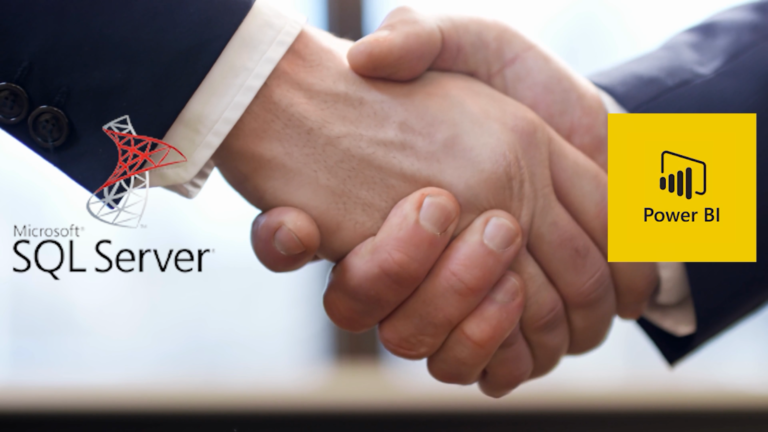Supercharge Your Reporting Efforts – Unlocking the Magic of Shared Datasets in Power BI
Introduction
In the fast-paced world of business intelligence, having access to accurate and up-to-date data is crucial for making informed decisions. Power BI, a powerful data visualization and analytics tool, offers a game-changing feature called shared datasets. In this article, we will delve into the realm of shared datasets and explore how they can supercharge your reporting efforts in Power BI.
Understanding Shared Datasets
What are Shared Datasets?
Shared datasets in Power BI are data models that can be created and published to a workspace, allowing multiple reports and dashboards to leverage the same underlying data. Instead of duplicating data and creating separate data models for each report, shared datasets enable centralization and data consistency.
Benefits of Shared Datasets
Shared datasets bring numerous benefits to Power BI users. Firstly, they promote data consistency across reports, ensuring that everyone is working with the same set of accurate data. Secondly, shared datasets improve collaboration by enabling multiple users to connect their reports to a single authoritative source. This eliminates the confusion and discrepancies that arise from disparate data sources.
Utilizing Shared Datasets in Power BI
Connecting to Shared Datasets
Connecting to shared datasets in Power BI is a straightforward process. Once a shared dataset is published to a workspace, users can connect their reports to it. This establishes a live connection, enabling any changes made to the shared dataset to reflect instantly in all connected reports. This seamless integration ensures that everyone is working with the most recent and accurate data.
Collaborating on Shared Datasets
Shared datasets foster collaboration among teams by allowing multiple users to work on reports simultaneously. Teams can collaborate on building complex reports, leveraging the expertise of individuals across different departments. This collaborative approach not only saves time but also leads to richer and more comprehensive insights.
Maintaining Data Consistency
One of the key advantages of shared datasets is maintaining data consistency. When changes are made to the underlying data model, such as adding new tables or modifying existing relationships, these changes automatically propagate to all reports connected to the shared dataset. This eliminates the need for manual updates and ensures that all reports are in sync, minimizing the risk of data discrepancies.
Supercharging Reporting Efforts
Streamlining Data Analysis
Shared datasets streamline data analysis by providing a centralized and reliable data source. Analysts and business users can focus on analyzing the data rather than spending time collecting and preparing it. This streamlined process saves valuable time and enables faster decision making.
Enabling Real-time Insights
With shared datasets in Power BI, real-time insights become a reality. As the shared dataset is constantly updated with the latest data, reports connected to it reflect real-time changes. This empowers organizations to monitor key metrics and trends in real-time, allowing for timely decision-making and immediate actions to be taken.
Empowering Cross-functional Teams
Shared datasets foster collaboration across cross-functional teams. By connecting reports from different departments to a shared dataset, everyone has access to the same data, ensuring alignment and fostering a data-driven culture. This collaboration breaks down silos and enables teams to work together towards common goals, leveraging the power of shared insights.
Best Practices for Shared Datasets
Data Security and Governance
When working with shared datasets, data security and governance are paramount. It is essential to define clear access controls and permissions to ensure that only authorized individuals can view or modify the shared dataset. Additionally, implementing data encryption and complying with data privacy regulations adds an extra layer of security.
Version Control and Documentation
Maintaining version control and documenting changes is crucial when dealing with shared datasets. Having a system in place to track changes, document modifications, and roll back to previous versions if necessary ensures data integrity and transparency. This helps in auditing and understanding the evolution of the shared dataset over time.
Communication and Collaboration
Effective communication and collaboration are key to maximizing the benefits of shared datasets. Establishing clear channels of communication, such as regular team meetings or dedicated collaboration tools, fosters collaboration and ensures that all stakeholders are informed about changes, updates, and insights derived from the shared dataset.
Overcoming Challenges
Data Privacy and Compliance
While shared datasets offer numerous advantages, it’s important to address data privacy and compliance concerns. Organizations must ensure that sensitive or confidential data is appropriately protected and comply with relevant regulations such as GDPR or HIPAA. Implementing data anonymization techniques or applying dynamic data masking can help mitigate privacy risks.
Managing Access and Permissions
Controlling access and permissions to shared datasets can be challenging, especially in large organizations with multiple teams and stakeholders. It’s crucial to define clear roles and responsibilities, granting appropriate access levels to ensure data security while allowing users to leverage the shared dataset effectively.
Conclusion
Shared datasets in Power BI unlock the magic of streamlined reporting, collaboration, and real-time insights. By centralizing data models and promoting data consistency, organizations can supercharge their reporting efforts. Leveraging shared datasets enables cross-functional teams to work together, empowers decision-makers with real-time insights, and drives a data-driven culture. By following best practices and overcoming challenges, organizations can harness the power of shared datasets to drive meaningful and actionable insights.
FAQs
Can I connect multiple reports to the same shared dataset in Power BI?
Yes, Power BI allows you to connect multiple reports to a shared dataset, ensuring data consistency across reports.
How can I ensure data security when using shared datasets?
You can ensure data security by implementing strict access controls, encryption measures, and complying with relevant data privacy regulations.
Can I collaborate with colleagues on reports connected to shared datasets?
Absolutely! Shared datasets enable collaborative work on reports, allowing multiple users to work together and leverage their expertise.
Are there any limitations to using shared datasets in Power BI?
While shared datasets offer numerous benefits, it’s important to consider factors like data size, performance, and data source compatibility when working with them.
How can shared datasets improve the efficiency of reporting processes?
Shared datasets streamline reporting processes by eliminating the need for data duplication and manual updates, saving time and ensuring data accuracy.














